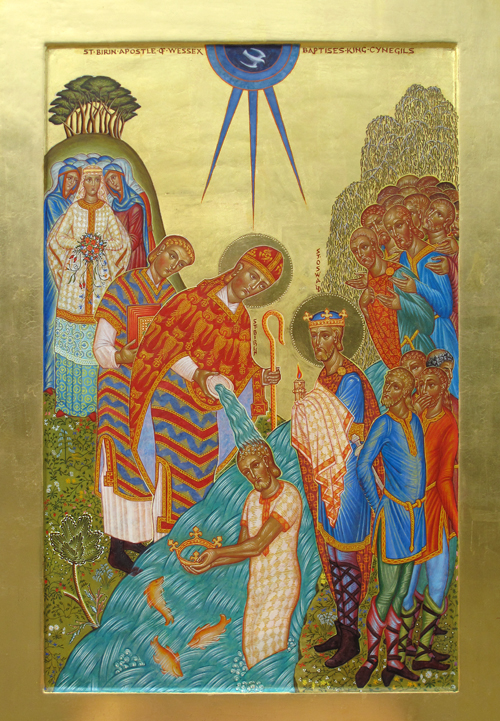In my previous post I said that the death of Pope Benedict XVI on the feast of a confessor Pope seemed very apposite. Here, courtesy of the wonderful Divinum Officium online Breviary, are the Mattins readings about St Sylvester. What strikes me is his concern with the sacramental life of the Church, its regulation and dignity, and with creating beautiful and noble churches, as well as approving sound doctrine. Is it not right and fitting to think of
a Pope Benedict as being faithful to that tradition?
Sylvester was a Roman by birth, and his father's name was Rufinus. He was brought up from a very early age under a Priest named Cyrinus, of whose teaching and example he was a diligent learner. In his thirtieth year he was ordained Priest of the Holy Roman Church by Pope Marcellinus. In the discharge of his duties he became a model for all the clergy, and, after the death of Melchiades, he succeeded him on the Papal throne, in the year of our Lord 314, during the reign of Constantine, who had already by public decree proclaimed peace to the Church of Christ. Hardly had he undertaken the government of the Church when he betook himself to stir up the Emperor to protect and propagate the religion of Christ. Constantine was fresh from his victory over his enemy Maxentius, on the Eve whereof the sign of the Cross had been revealed to him limned in light upon the sky; and there was an old story in the Church of Rome that it was Sylvester who caused him to recognise the images of the Apostles, administered to him holy Baptism, and cleansed him from the leprosy of misbelief.
The godly Emperor had already granted to Christ's faithful people permission to build public churches, and by the advice of Sylvester he himself set them the example. He built many Basilicas, and magnificently adorned them with holy images, and gifted them with gifts and endowments. Among these there were, besides others, the Church of Christ the Saviour, hard by the Lateran Palace; that of St. Peter, upon the Vatican Mount; that of St. Paul, upon the road to Ostia; that of St. Lawrence, in Verus' field; that of the Holy Cross at the Sessorian hall; that of St. Peter and St. Marcellinus, upon the Lavican Way; and that of St. Agnes, upon the road to Mentana. Under this Pope was held the first Council of Nicea, presided over by the Papal Legates, and in the Presence of Constantine, and three hundred and eighteen Bishops, where the holy and Catholic Faith was declared, and Arius and his followers condemned; which Council was finally confirmed by the Pope, at the request of all the assembled Fathers, in a synod held at Rome, where Arius was again condemned. This Pope issued many useful ordinances for the Church of God. He reserved to Bishops the right of consecrating the Holy Chrism; ordered Priests to anoint with Chrism the heads of the newly baptised; settled the officiating dress of Deacons as a dalmatic and a linen maniple; and forbade the consecration of the Sacrament of the Altar on anything but a linen corporal.
This Sylvester is likewise said to have ordained that all persons taking Holy Orders should remain awhile in each grade before being promoted to a higher; that laymen should not go to law against the clergy; and that the clergy themselves were not to plead before civil tribunals. He decreed that the first and seventh days of the week should be called respectively the Lord's Day and the Sabbath, and the others, Second Day, Third Day, and so on. In this he confirmed the use of the word Feria for the weekdays, the which use had already begun in the Church. This word signifieth an holiday, and pointeth to the duty of the clergy ever to lay aside all worldly labour, and leave themselves free to do continually the work of the Lord. The heavenly wisdom with which he ruled the Church of God, was joined in him to a singular holiness of life, and an inexhaustible tenderness towards the poor; in which matter he ordained that the wealthy clergy should each relieve a certain number of needy persons; and he also made arrangements for supplying the consecrated virgins with the necessaries of life. He lived as Pope twenty-one years, ten months and one day, and was buried in the cemetery of Priscilla on the Salarian Way, in the year 335. He held seven Advent ordinations, and made forty-two Priests, twenty-five Deacons, and sixty-five Bishops of various sees.





